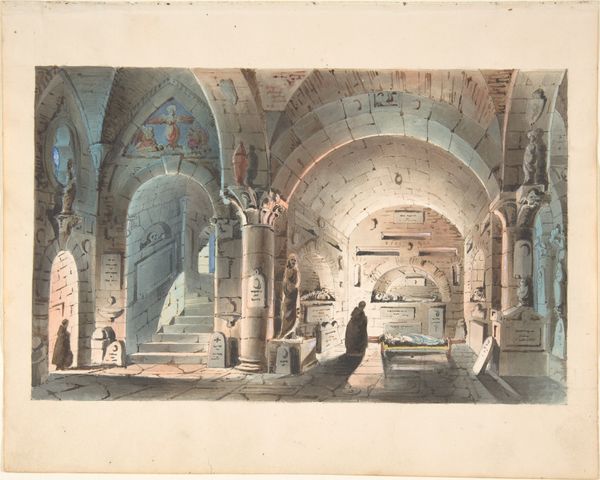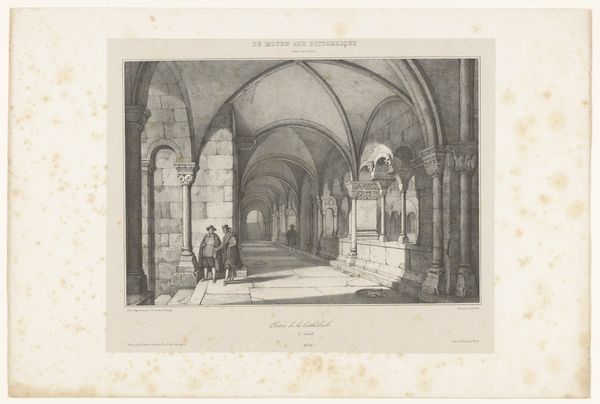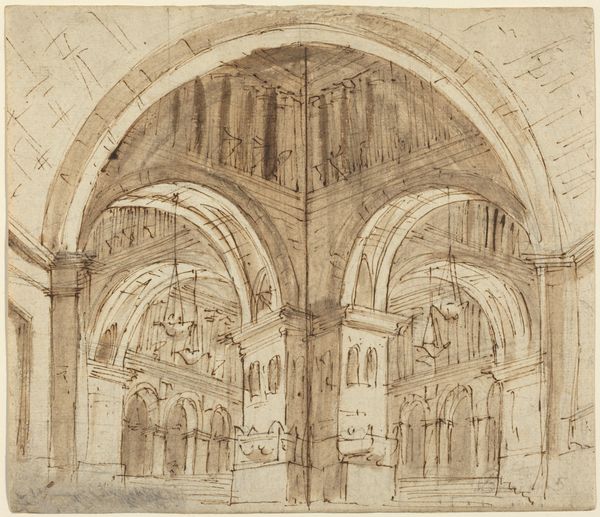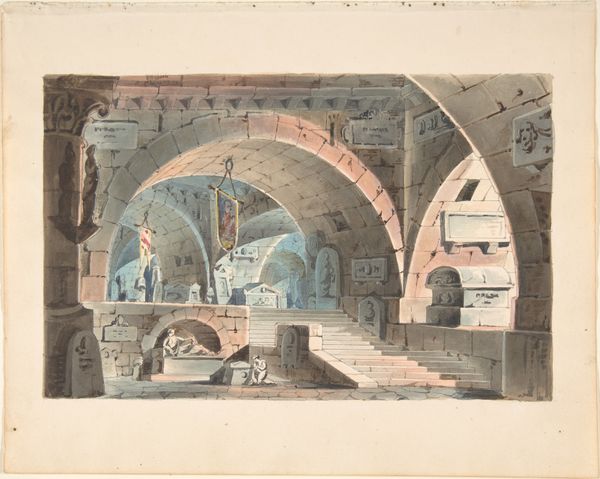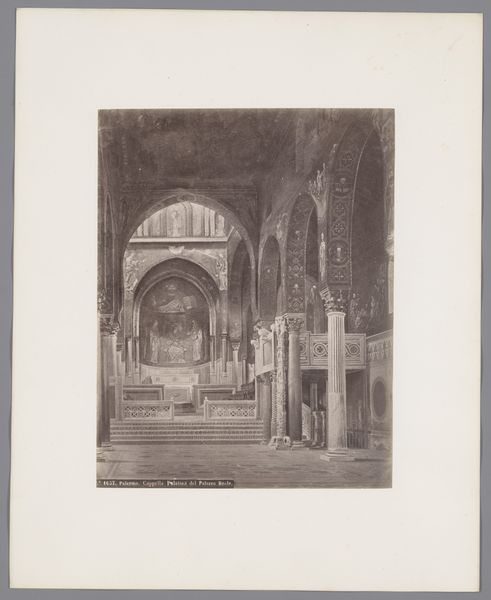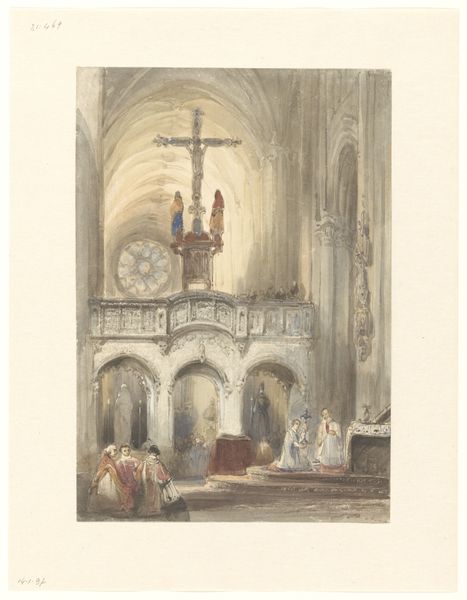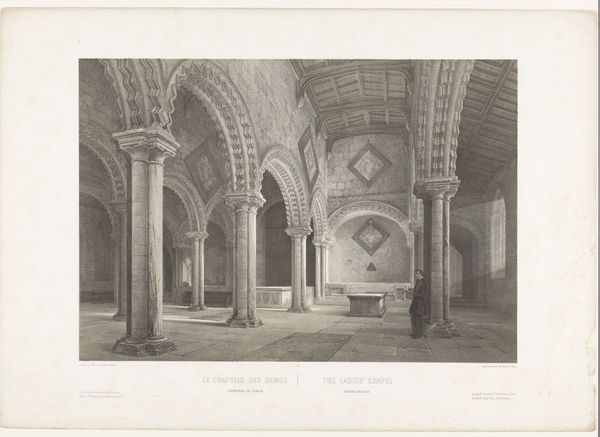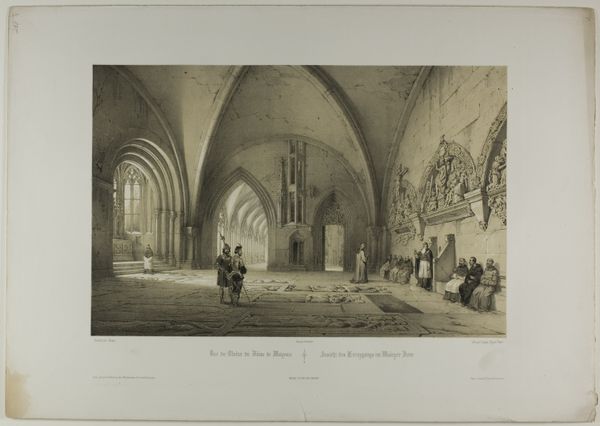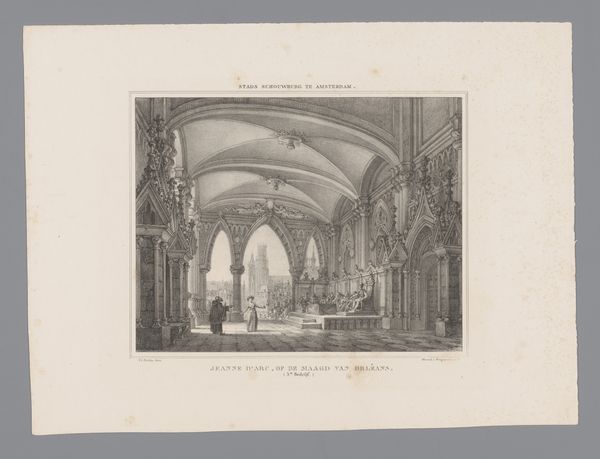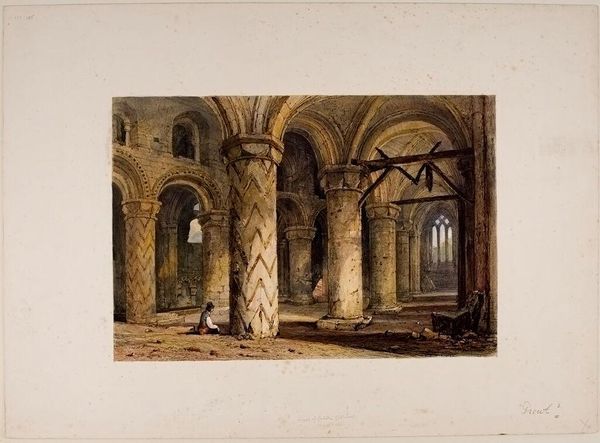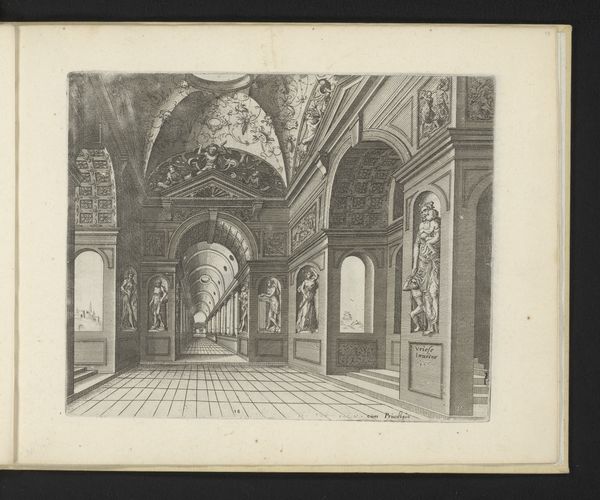
drawing, print, paper, watercolor
#
drawing
# print
#
paper
#
watercolor
#
romanticism
#
cityscape
#
history-painting
#
watercolor
Dimensions: 7-1/2 x 9-1/4 in
Copyright: Public Domain
Curator: This watercolor, "Design for a Stage Set: Cloister at Night," created by an anonymous artist around 1830 to 1840, captures a scene imbued with a spectral quality. It seems rather ghostly and dramatically lit. Editor: My first impression is one of stark coolness; the composition relies heavily on grayscale with hints of faded color. It reminds me of theatrical productions from the period, prioritizing mood above accurate depiction. Curator: Absolutely. The material itself, watercolor on paper, lends itself well to such an atmospheric scene. The light and shadow play masterfully on the architectural forms – notice how the artist uses line and wash to define the cloister’s receding arches. The craftsmanship involves meticulous layering and blending to evoke both depth and the period. Editor: But also, what type of labor was needed to create and exhibit such work, no? It must have demanded quite the division of work among skilled artists, each potentially specializing in perspective drawing, sculptural details, or, perhaps, color tinting, given the high standards expected within the context of set design production. How do the techniques, likely rooted in standardized processes, inform the staging process, enabling certain narrative strategies based on their specific capabilities, affecting material expression within a theater backdrop? Curator: Indeed, the historical context is crucial to understanding this work. Stage designs from this era frequently employed Romanticism’s motifs and ideals to engage viewers imaginatively and convey intricate ideas. This is apparent with how depth plays, where linear perspective merges perfectly to a central, darkened space— a visual metaphor. Editor: Consider also that each statue or decorative item may well signify certain attributes or cultural themes which contribute contextually—making labor central to decoding possible hidden allegorical narratives encoded in set construction. Curator: What strikes me profoundly are these alternating vertical pillars, each differing slightly yet contributing a sense of unity. The composition echoes the pursuit of harmonious structure that neoclassical stage designs aspired to achieve. Editor: I come away feeling a heightened understanding of how the economic investment influenced theater design standards during this transformative chapter of the arts, and also labor's contribution—it makes me wonder about those individuals' unrecorded, real stories. Curator: And for me, appreciating the structural rigor behind Romanticism enriches the aesthetic significance even further and how effectively visual aspects such as lines may enhance or deepen any storyline.
Comments
No comments
Be the first to comment and join the conversation on the ultimate creative platform.
